Related Research Articles

Amy Lawrence Lowell was an American poet of the imagist school. She posthumously won the Pulitzer Prize for Poetry in 1926.

Robert Charles Winthrop was an American lawyer, philanthropist, and Whig Party politician who represented Massachusetts in the United States House and Senate from 1840 to 1851. He served as the 18th Speaker of the United States House of Representatives and was a political ally and colleague of Daniel Webster. After a rapid rise in Massachusetts and national politics and one term as speaker, Winthrop succeeded Webster in the Senate. His re-election campaign resulted in a long, sharply contested defeat by Charles Sumner. He ran for Governor of Massachusetts in 1851 but lost due to the state's majority requirement, marking the end of his political career and signaling the decline of the Massachusetts Whig Party.
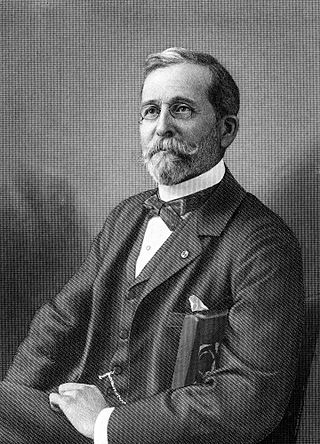
Theodore Ayrault Dodge was an American officer, military historian, and businessman. He fought as a Union officer in the American Civil War; as a writer, he was devoted to both the Civil War and the great generals of ancient and European history.

Colonel Thomas Handasyd Perkins, also known as T. H. Perkins, was an American merchant, slave trader, smuggler and philanthropist from a wealthy Boston Brahmin family. Starting with bequests from his grandfather and father-in-law, he amassed a huge fortune. As a young man, he traded slaves in Saint-Domingue, worked as a maritime fur trader trading furs from the American Northwest to China, and then turned to smuggling Turkish opium into China. His philanthropic contributions include the Perkins School for the Blind, renamed in his honor; the Boston Museum of Fine Arts; McLean Hospital; along with having a hand in founding the Massachusetts General Hospital.
Bowdoin Street in Boston, Massachusetts, extends from the top of Beacon Street, down Beacon Hill to Cambridge Street, near the West End. It was originally called "Middlecott Street" as early as the 1750s. In 1805 it was renamed after the Governor James Bowdoin.
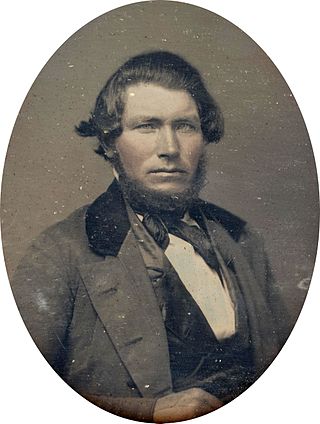
James Ware Bradbury was an American attorney and politician from Maine. A Democrat, he served as a United States Senator from 1847 to 1853.
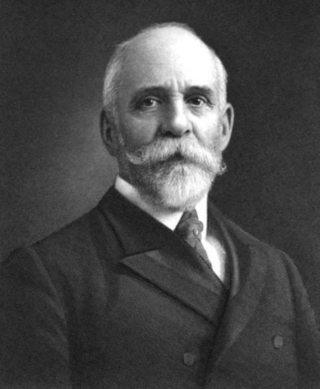
Edwin Hale Abbot (1834–1927) was a lawyer and railroad executive, active in Boston and Milwaukee.

Thomas Lindall Winthrop was a Massachusetts politician who served as the 13th lieutenant governor of Massachusetts from 1826 to 1833. He was elected both a Fellow of the American Academy of Arts and Sciences in 1813 and a member of the American Antiquarian Society in 1837.

James Ripley Osgood (1836–1892) was an American publisher in Boston. He was involved with the publishing company that became Houghton Mifflin.
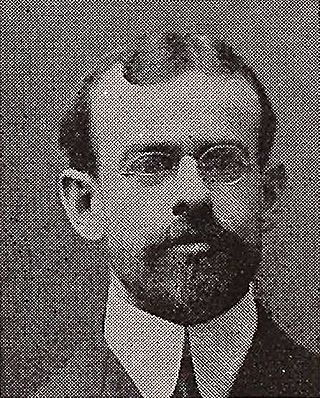
Allen Johnson (1870–1931) was an American historian, teacher, biographer, and editor of the Dictionary of American Biography.
The Boston Record was founded on September 3, 1884, by The Boston Daily Advertiser as an evening campaign newspaper. The Record was so popular that it was made a permanent publication. It was the first tabloid-format newspaper in New England.
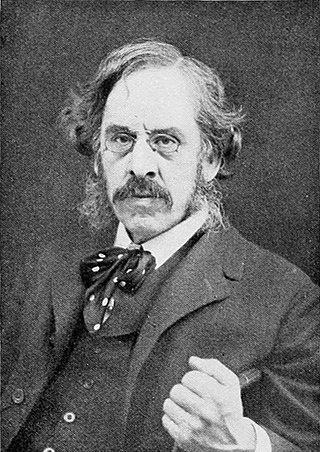
Edwin Munroe Bacon was an American writer and editor who worked for the Boston Daily Advertiser and The Boston Globe and also wrote books about Boston, Massachusetts, and New England. His books include Bacon's Dictionary of Boston.
Thomas Waldron Sumner (1768–1849) was an architect and government representative in Boston, Massachusetts, in the early 19th century. He designed East India Marine Hall and the Independent Congregational Church in Salem; and the South Congregational Society church in Boston. He was also involved with the Exchange Coffee House, Boston.
John Christian Rauschner was a German artist who specialized in portraits made of wax. He worked for some time in the United States, travelling to Boston, New York City, Philadelphia and elsewhere. Examples of Rauschner's artwork are in the Albany Institute of History & Art; American Antiquarian Society; Bostonian Society; Fruitlands Museum; Historic New England; Massachusetts Historical Society; Metropolitan Museum of Art, New York; Museum of Fine Arts, Boston; New York Historical Society; Peabody Essex Museum; Philadelphia Museum of Art; West Point Museum; the White House, Washington DC; and Winterthur Museum.
William Charles Mackie was an American college football player and coach. He was an All-American guard at Harvard University and served as the head football coach at Bowdoin College. After football, Mackie practiced medicine and served as medical examiner for Norfolk County, Massachusetts.
Emma Gertrude Cummings was an American horticulturalist and ornithologist.

A statue of Josiah Quincy III by Thomas Ball is installed outside Boston's Old City Hall, in the U.S. state of Massachusetts. The sculpture belongs to the City of Boston.
George Harrison Mifflin was an executive in the publishing business. He served as president of Houghton Mifflin.

Roland Worthington was an American newspaper publisher and political figure who served as publisher of the Boston Evening Traveller and Collector of Customs for the Port of Boston.

John H. Sherburne was an attorney, politician, and military officer from Boston. A graduate of Harvard College (1899) and Harvard Law School (1901), he practiced as the senior partner of a prominent Boston firm. A Republican, he served in the Massachusetts House of Representatives from 1911 to 1917. A military veteran of more than 50 years, Sherburne served during the Pancho Villa Expedition, World War I, and World War II and attained the rank of brigadier general. He commanded several Field Artillery units during the First World War and was the Adjutant General of Massachusetts during the second. Sherburne was a recipient of numerous military awards, including the Silver Star, Purple Heart, French Legion of Honor (Commander), and French Order of the Black Star (Commander).
References
- 1 2 3 4 Manufacturers, National Association of Wool (October 21, 1924). "Bulletin". National Association of Wool Manufacturers – via Google Books.
- ↑ Society, Massachusetts Historical (October 21, 1924). "Proceedings of the Massachusetts Historical Society". The Society – via Google Books.
- ↑ https://books.google.com/books?id=Tqs8AQAAIAAJ&pg=PA137&dq=daniel+caldwell+stanwood&hl=en&newbks=1&newbks_redir=0&source=gb_mobile_search&sa=X&ved=2ahUKEwjghObH45CKAxXo5MkDHe7fJWcQ6AF6BAgJEAM
- ↑ "House of Edward Stanwood, Esq., Brookline, Massachusetts". collections.mfa.org.
- 1 2 England, Buildings of New (October 30, 2020). "Edward Stanwood House // 1879".
- 1 2 3 4 Society, Massachusetts Historical (October 21, 1924). "Proceedings of the Massachusetts Historical Society". The Society – via Google Books.
- ↑ "Brookline Historical Society: People". brooklinehistoricalsociety.org.
- ↑ Bolton, Charles Knowles (October 21, 1924). "Memoir of Edward Stanwood". s.n. – via Google Books.
- ↑ "A History of the Presidency. By EDWARD STANWOOD. Pp. vi, 586. Price, $2.50. Boston: Houghton, Mifflin & Co., I898 - Bernard C. Steiner, 1899". doi:10.1177/000271629901300212.
- ↑ "Autograph Collection - Stanwood, Edward, 1841-1923". cplorg.contentdm.oclc.org.
- ↑ "Boston illustrated., by Edward Stanwood | The Online Books Page". onlinebooks.library.upenn.edu.
- ↑ Stanwood, Edward (October 21, 1905). "James Gillespie Blaine". Houghton, Mifflin – via Google Books.